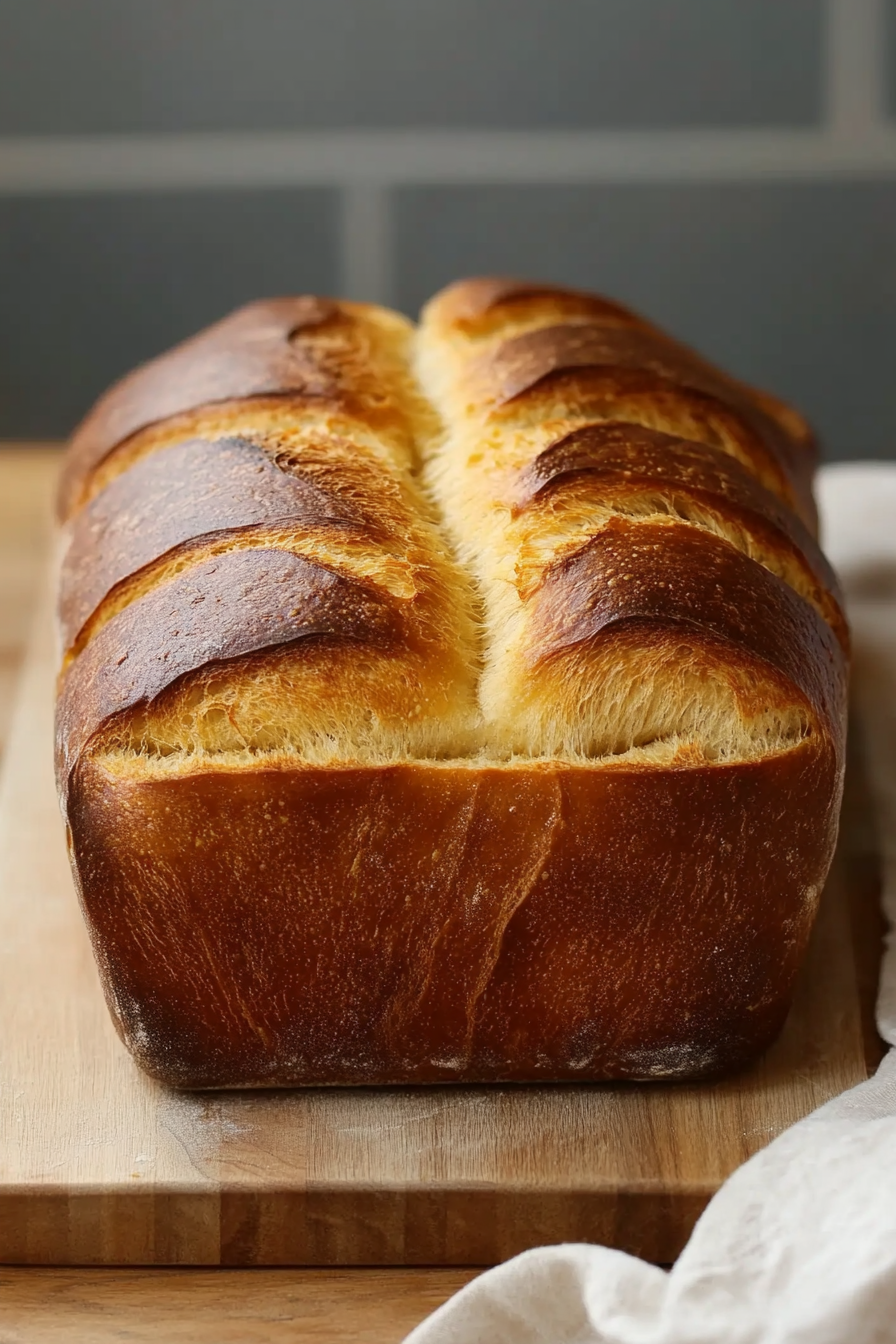
Sourdough Brioche Recipe
A remarkably tender and buttery sourdough brioche loaf that combines a delicate crumb with deep flavor. This recipe guides you through building a levain, preparing a gelatinized yudane, and methodically developing a rich, yeasted dough for an exceptional homemade loaf.
Print
Pin
Ingredients
Levain
- 30 g Bread Flour
- 30 g Sourdough Starter
- 30 g Warm Water
Yudane
- 58 g Boiling Water
- 58 g Bread Flour
- Sourdough Brioche Bread Dough
- 2 Eggs
- 59 g Whole Milk room temperature
- 212 g Bread Flour
- 27 g Granulated Sugar
- 5 g Sea Salt
Yudane (prepared earlier)
- Levain prepared earlier or substitute 90g active sourdough starter
- 113 g Unsalted Butter softened and divided into 8 portions
Egg Wash
- 1 tsp Water
- 1 Egg
Instructions
Build the Levain:
- In a clean jar, combine sourdough starter, warm water, and bread flour. Cover and allow to ferment in a warm spot until doubled in volume and bubbly, approximately 5 hours. Alternatively, use 90 grams of active starter directly.
Make the Yudane:
- Place the bread flour in a small heatproof bowl. Pour the boiling water directly over the flour and stir until a thick, gelatinous paste forms. Let cool completely.
Mix the Dough:
- Combine all ingredients for the dough—excluding the butter—in a stand mixer fitted with a dough hook. Mix on low until a rough dough forms, then increase to medium speed for 5 minutes. The dough should become smoother and mostly pull away from the sides of the bowl.
Incorporate the Butter:
- With the mixer on medium speed, gradually add the softened butter, one piece at a time. Wait for each piece to fully blend before adding the next. Continue mixing for at least 10 minutes in total. When all butter is incorporated, mix for an additional 5 minutes until the dough is glossy, elastic, and passes the windowpane test.
Bulk Fermentation:
- Transfer the dough to a lightly oiled bowl, form into a ball, cover, and allow to ferment at 78ºF for about 5 hours. Perform one set of stretch and folds after the first hour, and a second set if the dough still appears slack after the second hour.
Overnight Proof:
- Refrigerate the dough for at least 8 hours, or up to 48 hours, to complete its cold fermentation.
Divide and Shape:
- Butter or spray a 9"x5" loaf pan. Remove the chilled dough, punch it down, and divide it into four equal pieces (approximately 170–175g each). Flatten each into a rectangle and roll into a tight cylinder. Place all four pieces seam side down in the prepared pan.
Final Proof:
- Let the dough rise, covered, in a warm place at 78ºF for around 5 hours, or until doubled. A gentle press with a floured finger should leave an indentation when the dough is ready.
Bake:
- Preheat the oven to 400ºF. Prepare an egg wash by whisking an egg with water. Gently brush the risen dough. Place the loaf in the oven and immediately reduce the temperature to 350ºF. Bake for 45 minutes, until the crust is golden and internal temperature registers 195–205ºF. Let cool for 5 minutes in the pan, then transfer to a wire rack to cool completely.
Notes
Maintain dough temperature near 75–80ºF during fermentation for optimal yeast activity. Cooler temperatures will slow proofing; warmer conditions will accelerate it.